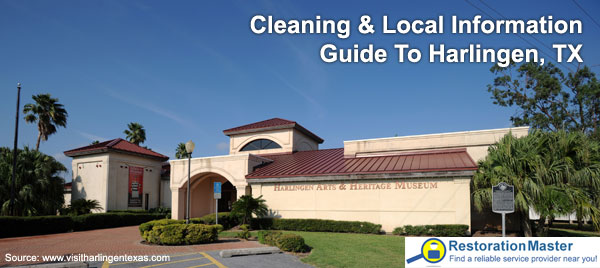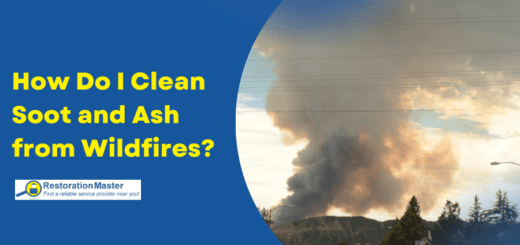House Fires: Causes, Solutions, and Expert Cleanup Services
The United States is facing a pressing fire problem, as evidenced by recent statistics provided by the National Fire Protection Association. According to the most recent data available, U.S. fire departments were summoned to respond to a staggering estimate of 1,389,500 fires. Tragically, these incidents resulted in 3,005 civilian deaths, 17,500 civilian injuries, and an astonishing $11.7 billion in property damage.
Of particular concern are the 484,500 structureStructure refers to the framework or components of a buildin... More fires recorded, which led to 2,640 civilian deaths, 15,635 civilian injuries, and $9.7 billion in property damage. These numbers represent more than just statistics; they reflect the personal experiences of countless individuals who have witnessed the devastating effects of fires in their homes or businesses.
The financial and emotional toll of dealing with fire damage is immense, underscoring the urgent need for effective fire preventionPrevention refers to actions taken to reduce the likelihood ... More measures and heightened awareness of fire safety practices. To address this pressing issue, it is imperative that we gain a deeper understanding of what causes house fires and how we can effectively deal with them?
Common Causes of House Fires
Here are some of the most frequent causes of house fires, including heating equipment and holiday-related hazards like Christmas trees, and provide tips on how to prevent them.
- Cooking Accidents: Cooking accidents are one of the leading causes of house fires. Unattended stoves, overheated oil, and flammable materials left too close to heat sources can ignite and quickly escalate into dangerous fires. To prevent cooking-related fires, always stay in the kitchen while cooking, use a timer as a reminder, and keep flammable items away from the stove.
- Electrical Malfunctions: Faulty wiring, overloaded circuits, and damaged electrical appliances can spark electrical fires. Regularly inspect your home’s electrical system for signs of wear and tear, such as frayed wires or flickering lights. Avoid overloading outlets with too many devices, and consider upgrading older electrical systems to meet current safety standards.
- Heating Equipment: Improper use of heating equipment, such as space heaters, furnaces, and fireplaces, can also leadLead is a heavy metal that can be toxic to humans, especiall... More to house fires. Keep flammable materials at least three feet away from heaters and ensure proper ventilationVentilation is the process of exchanging or circulating air ... More for gas-powered appliances. Never leave heating devices unattended, and have chimneys and vents cleaned and inspected regularly to prevent the buildup of combustible materials.
- Candles: While candles can create a cozy ambiance, they also pose a fire hazard if not used safely. Keep candles away from curtains, bedding, and other flammable materials, and always extinguish them before leaving the room or going to bed. Consider using flameless LED candles as a safer alternative.
- Smoking: Careless smoking is another common cause of house fires. Smoldering cigarettes or improperly discarded ashes can ignite furniture, bedding, or household items. If you smoke indoors, use deep, sturdy ashtrays and never smoke in bed or when drowsy. Ensure all cigarettes are fully extinguished before disposing of them.
- Flammable Liquids: Storing flammable liquids such as gasoline, paint thinner, or cleaning products improperly can increase the risk of fire. Keep these substances in well-ventilated areas away from heat sources and ignition points. Use caution when handling and storing flammable liquids, and follow manufacturers’ instructions for safe usage and disposal.
- Children Playing with Fire: Curious children experimenting with matches, lighters, or other fire-starting materials can accidentally ignite fires. Educate children about the dangers of playing with fire and keep matches and lighters out of their reach. Consider installing childproof safety mechanisms on lighters and teaching children proper fire safety practices.
- Faulty Appliances: Old or poorly maintained appliances, such as dryers, dishwashers, and space heaters, can malfunction and spark fires. Regularly inspect appliances for signs of damage or malfunction, and replace or repairRepair is the act of fixing or restoring damaged property, m... More them as needed. Follow manufacturers’ instructions for installation, usage, and maintenanceMaintenance is the routine care, inspection, and repair of a... More to reduce the risk of appliance-related fires.
- Flammable Fabrics: Certain fabrics, such as curtains, bedding, and upholstery, can ignite easily and spread fire rapidly. Choose flame-resistant materials whenever possible, especially for furnishings and decorations near heat sources. Avoid placing candles, heaters, or other open flames near flammable fabrics, and keep curtains and drapes away from radiators and space heaters.
- Heating and Christmas Trees: During the holiday season, Christmas trees and heating equipment pose additional fire risks. Keep Christmas trees well-watered to prevent them from dryingDrying is the process of removing moisture from materials, s... More out and becoming more flammable. Place them away from heat sources, such as fireplaces and heaters, and never use lit candles on or near the tree. Ensure that holiday lights are in good condition and do not overload electrical outlets when decorating.
Repercussions You Face After a House Fire
After experiencing a house fire, individuals and families often face a multitude of damages, both tangible and intangible. Here are some of the common damages that you may encounter:
- Property Damage: The immediate impact of a house fire is the destruction of your property. Flames can consume your belongings, furniture, appliances, and even parts of your home’s structureStructure refers to the framework or components of a buildin... More, leaving behind a mess of charred debris and irreparable damage.
- Loss of Personal Belongings: Alongside the physical destruction, you’ll likely feel the loss of your personal items deeply. Sentimental treasures, valuables, and everyday essentials may be lost in the fire, leaving you with a profound sense of loss and emotional distress.
- Structural Compromise: Your home’s structural integrity may be compromised by the fire, putting its stability and safety at risk. This could mean needing extensive repairs or, in the worst-case scenario, having to rebuild parts of your home.
- Smoke and SootSoot is fine black particles composed of carbon and other ma... More Fallout: Even areas untouched by flames aren’t spared. Smoke can infiltrate walls, ceilings, and furnishings, leaving behind a strong odorAn odor is a smell, often detectable by the human nose, whic... More and stubborn stains. SootSoot is fine black particles composed of carbon and other ma... More can coat surfaces, making cleanup a challenging task.
- Water Woes: Firefighting efforts often result in water damage to your property, adding to the mess left behind by the fire. This can leadLead is a heavy metal that can be toxic to humans, especiall... More to moldMold is a type of fungus that grows in damp or humid conditi... More growth and make the cleanup and restorationRestoration is the process of returning a property to its pr... More process even more difficult.
- Health Setbacks: Exposure to smoke, toxins, and hazardous substances during a house fire can take a toll on your health. You might experience respiratory issues, irritation of the eyes and skin, and emotional distress that lingers long after the fire is out.
- Financial Strain: Rebuilding your life after a fire can be financially burdensome. In addition to property damage, you’ll have expenses for temporary housing, replacing lost belongings, and restorationRestoration is the process of returning a property to its pr... More efforts. While insurance can help, there may still be out-of-pocket costs to consider.
- Displacement and Disruption: A house fire disrupts your life in many ways. You may need to find temporary housing, navigate insurance processes, and deal with the logistical challenges of restorationRestoration is the process of returning a property to its pr... More, all of which can be overwhelming and time-consuming.
- Emotional Turmoil: The emotional toll of a house fire is significant. Coping with the trauma of losing your possessions, memories, and sense of security can be incredibly difficult, leading to feelings of grief, anxiety, and uncertainty about the future.
- Long-term Hurdles: Even after the immediate aftermath has passed, you’ll likely face ongoing challenges. Dealing with insurance claims, overseeing renovations, and adjusting to a new normal can be daunting tasks. It’s important to be patient with yourself and seek support as needed.
How to Prevent House Fires?
Here are some essential tips to help you reduce the risk of a house fire:
- Install Smoke Alarms: Make sure you have working smoke alarms installed on every level of your home and inside each bedroom. Test them regularly and replace batteries at least once a year.
- Create an Escape Plan: Develop a fire escape plan with your family and practice it regularly. Make sure everyone knows how to evacuate safely and where to meet outside in case of a fire.
- Keep Heat Sources Clear: Keep flammable items such as curtains, bedding, and furniture at least three feet away from heat sources like heaters, stoves, and fireplaces.
- Practice Safe Cooking Habits: Never leave cooking unattended, and keep flammable materials away from the stove. Use a timer as a reminder and keep a fire extinguisher in the kitchen.
- Use Candles Safely: Keep candles in sturdy holders and place them on stable surfaces away from flammable materials. Never leave candles unattended and extinguish them before leaving the room or going to bed.
- Be Careful with Electrical Appliances: Inspect electrical cords and outlets regularly for damage and replace any frayed or damaged cords. Avoid overloading outlets and unplug appliances when not in use.
- Use Space Heaters Wisely: Keep space heaters at least three feet away from anything that can burn, such as curtains, bedding, and furniture. Never leave them unattended, and turn them off before leaving the room or going to bed.
- Practice Safe Smoking: If you smoke, do so outside and use deep, sturdy ashtrays. Never smoke in bed or when drowsy, and ensure all cigarettes are fully extinguished before disposal.
- Maintain Heating Systems: Have your heating system, including furnaces, chimneys, and vents, inspected and cleaned regularly by a professional. This helps prevent malfunctions and reduces the risk of fire.
- Store Flammable Materials Safely: Store flammable liquids such as gasoline, paint thinners, and cleaning products in properly ventilated areas away from heat sources and ignition points.
- Keep Christmas Trees Watered: If you have a live Christmas tree, keep it well-watered to prevent it from dryingDrying is the process of removing moisture from materials, s... More out and becoming more flammable. Place it away from heat sources and never use lit candles on or near the tree.
- Install Fire Extinguishers: Keep fire extinguishers in key locations throughout your home, such as the kitchen, garage, and near heating appliances. Learn how to use them properly and ensure they are regularly inspected and maintained.
Whom to Call If you have a Fire Damage?
In the unfortunate event of fire damage to your home, reaching out to your local fire department is vital. By dialing the emergency services number, usually 911, you’ll connect with firefighters who are there to help. Their expertise and dedication ensure they’ll work diligently to extinguish the fire and keep everyone safe. Once the flames are out and it’s safe to return, notifying your insurance provider about the damage is essential. They’ll be your ally through the claims process, providing support and guidance along the way. Additionally, consider getting in touch with a reputable restorationRestoration is the process of returning a property to its pr... More company specializing in fire damage. These professionals are equipped to assess the damage, prevent further harm, and work towards restoring your home to its former glory. Remember, during this challenging time, it’s okay to lean on your support network for comfort and assistance.
Contact RestorationMaster for Fire Damage Restoration
For expert cleanup services, don’t hesitate to contact RestorationMaster. Our team of skilled professionals specializes in restoring homes and properties affected by fire, helping you navigate through this challenging time with care and expertise. From assessing the extent of the damage to executing comprehensive restorationRestoration is the process of returning a property to its pr... More efforts, we are committed to restoring your home to its pre-fire condition efficiently and effectively. With years of experience and a dedication to customer satisfaction, you can trust RestorationMaster to handle your fire damage restorationFire damage restoration is the process of repairing and rest... More needs with professionalism and compassion.
Contact us today to learn more about our fire damage restoration services.












